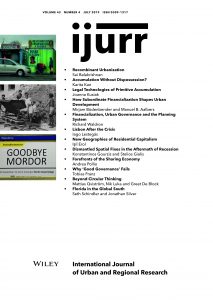Transit‐oriented development (TOD) plays a significant role within contemporary planning policies for ‘smart growth’ and sustainable development, particularly in Europe and North America. As a well‐rehearsed practice, this planning model is due for critical assessment and improvement in terms of its ability to incorporate dynamic and heterogeneous socio‐spatial processes as matters of concern. Analyses of the conditions for ‘making TOD work’ in the scholarly and professional literatures tend to focus on the ‘node’ and ‘place’ qualities. While elaborations on node analysis (primarily based on accessibility measurements) abound within empirical research, discussions of place‐specific assets are limited in scope and often spatially bounded by the circle defined by a 10‐minute walk. This essay examines the use of this generic ‘circle’ model, and how it normatively frames how place is understood in TOD studies. We argue that the circle enhances a Euclidean understanding of the site, which favours a static and homogeneous spatial analysis of accessibility and density rather than (other) place qualities relating to dynamic socio‐spatial processes. Finally, we argue that relational geography can facilitate an analysis of place qualities beyond the circle—one in which both the continuities and shifting settings of the wider context are meaningfully taken into consideration.
Details
Written by:
Mattias Qviström, Nik Luka & Greet De Block
Digital Object Identifier (DOI)
10.1111/1468-2427.12798
About DOI

